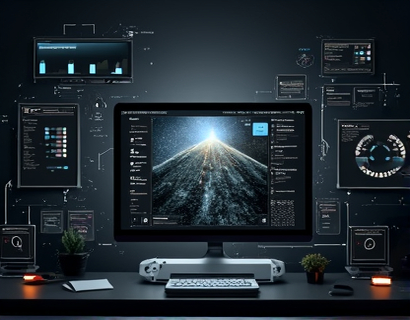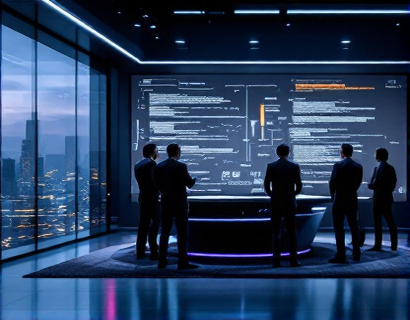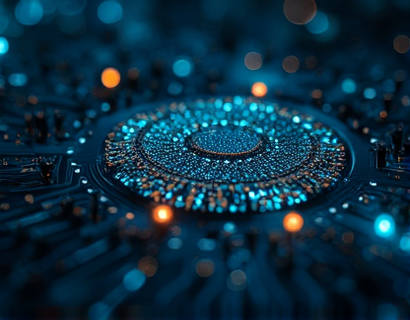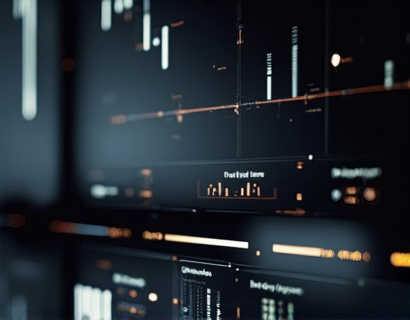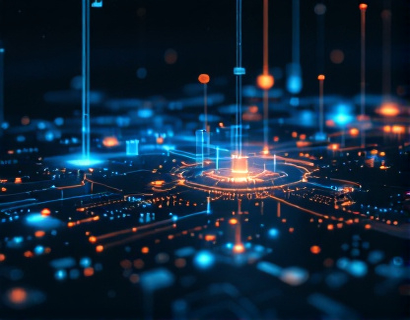Unlocking the Universe: Mastering Astrophysics for Aspiring Learners and Cosmic Enthusiasts
Astrophysics is the cornerstone of our understanding of the cosmos and the fundamental laws that shape the universe in which we live and thrive. This comprehensive guide is crafted to serve aspiring astrophysicists and cosmic enthusiasts alike. We explore celestial wonders from the smallest particles to the grandest galactic formations. Each section illuminates key concepts, tools, and techniques necessary for a thorough comprehension of astrophysical phenomena. Readers will gain insights into stellar life cycles, the behavior of light across the electromagnetic spectrum, and the large scale structure of the cosmos. By the end of this journey, learners of all ages will be ready to embark on their own path of scientific discovery and cosmic exploration. This resource ignites curiosity and deepens knowledge through engaging descriptions and illustrative examples. Embrace the challenge of decoding cosmic mysteries with confidence and clarity. Let us begin our journey through the vast expanse of space and time.
Why Study Astrophysics
Studying astrophysics opens doors to understanding how stars, planets, and galaxies form and evolve. Observational data from telescopes and satellites allow scientists to test theories of gravity and relativity. Applying mathematical models and simulations reveals the dynamic processes at play in the cosmic landscape. Aspiring astrophysicists build a toolkit of analytical skills and hone problem solving abilities through research projects and laboratory experience. The field encourages creativity and innovation as researchers design novel experiments and instruments. Learning the language of physics and mathematics empowers learners to communicate ideas precisely. Studying astrophysics also fosters a sense of wonder and curiosity that transcends cultural boundaries. Ultimately, the pursuit of cosmic knowledge unites humanity in the quest to comprehend its place in the universe.
In addition to academic and research opportunities, astrophysics careers span space agency missions, telescope operations, data analysis, and science communication. Many professionals engage with public outreach to share discoveries through lectures, publications, and digital media. The rise of private space ventures offers new avenues for innovative projects and exploratory missions. Computational astrophysics has become increasingly important as data volumes grow from large sky surveys and space based observatories. Mastery of programming languages like Python and expertise in statistical methods are essential skills for modern researchers. Collaborative networks and open source tools accelerate progress across the scientific community. Engaging with interdisciplinary teams integrates astrophysics with fields such as geology, biology, and planetary science. This diversity of opportunities ensures that passion for cosmic exploration can translate into a rewarding career path.
Key Concepts in Astrophysics
Gravity and Relativity
Gravity is the force that governs the motion of celestial bodies across the universe, from the delicate orbits of planets to the violent collisions of galaxies. Isaac Newton first described gravitational attraction as proportional to mass and inversely proportional to the square of the distance. Albert Einstein later expanded this view with his general theory of relativity, which portrays gravity as the curvature of spacetime. Understanding these principles is fundamental to modeling planetary trajectories, predicting the bending of light near massive objects, and exploring the origins of black holes. Students learn to solve complex equations that describe these phenomena and test predictions against observational data. Mastery of gravity and relativity forms the backbone of theoretical and observational astrophysics research.
Light and the Electromagnetic Spectrum
Light is the primary messenger between the cosmos and our instruments, carrying information across vast distances. The electromagnetic spectrum spans from low frequency radio waves to high energy gamma rays. Each region of the spectrum reveals unique processes occurring in stars, galaxies, nebulae, and accretion disks. Spectroscopy provides insights into chemical composition, temperature, velocity, and magnetic fields of astronomical objects. Advanced detectors and filters isolate narrow bands of wavelengths to study phenomena such as molecular clouds and star forming regions. Understanding the interaction between light and matter allows astrophysicists to decode cosmic signatures and trace the evolution of structures over cosmic time. Mastery of spectral analysis and photometry is essential for interpreting data from ground and space based observatories.
Stellar Evolution
Stellar evolution charts the life cycle of stars from birth to death within a cosmic nursery of gas and dust. Protostars form as gravitational collapse heats dense molecular clouds until nuclear fusion ignites in their cores. Stars spend the majority of their lives on the main sequence, fusing hydrogen into helium with remarkable stability. As fusion fuels diminish, stars evolve into red giants or supergiants, undergoing shell burning and reshaping their interiors. Massive stars may end their lives as supernovae, scattering heavy elements into the interstellar medium and sometimes leaving behind neutron stars or black holes. In contrast, lower mass stars shed their outer layers gently, creating planetary nebulae and leaving white dwarf remnants. Understanding stellar evolution is crucial for tracing chemical enrichment and the formation of planetary systems.
Galaxies and Cosmology
Galaxies are the building blocks of the universe, bound by gravity into intricate structures ranging from dwarf spheroidals to colossal ellipticals and spirals. Observations reveal that galaxies cluster into groups, clusters, and superclusters, forming a vast cosmic web. Cosmology studies the origin, evolution, and fate of the universe as a whole, incorporating theories of the Big Bang, inflation, dark matter, and dark energy. Understanding the distribution of galaxies provides clues about the underlying physics of dark matter and the accelerating expansion driven by dark energy. Surveys of the cosmic microwave background radiation map primordial fluctuations that seeded structure formation. By synthesizing observational evidence with theoretical models, astrophysicists seek to answer questions about the age, composition, and geometry of the universe.
Tools and Techniques
Astrophysics relies on a variety of observational and computational tools to gather and analyze data from the cosmos. Ground based telescopes such as optical and radio observatories capture electromagnetic signals from distant objects, while space telescopes avoid atmospheric distortion to provide clearer images. Instruments like spectrographs break light into its component colors to reveal physical properties of stars and galaxies. Particle detectors onboard satellites measure cosmic rays and high energy particles originating from solar flares and supernova shocks. On the computational side, astrophysicists develop numerical simulations to model galaxy formation, star cluster dynamics, and cosmic reionization. High performance computing clusters process immense data sets and complex algorithms, enabling the study of phenomena across multiple scales. Access to open source software libraries and collaborative platforms accelerates the sharing of methods and results among research teams.
- Optical Telescopes capture visible light for imaging and photometry
- Radio Telescopes detect long wavelength emissions from interstellar gas and pulsars
- Space Telescopes operate above atmospheric interference for ultra violet, infrared, and X ray observation
- Spectrographs analyze light to determine composition, velocity, and temperature of celestial bodies
- Interferometry combines signals from multiple telescopes to increase resolution and sensitivity
- High Performance Computing enables large scale simulations of cosmic structure formation and stellar dynamics
- Data Reduction Pipelines automate calibration, noise reduction, and source extraction for large surveys
- Machine Learning algorithms classify astronomical objects and detect transient events in real time
Researchers increasingly integrate machine learning and artificial intelligence to process and interpret the terabytes of data generated daily by observatories and space missions. These tools enable the discovery of rare phenomena, such as gravitational lensing events and transient explosions like supernovae and gamma ray bursts, by scanning vast data archives efficiently.
Learning Paths and Resources
Embarking on the study of astrophysics can seem daunting, but a clear learning path can guide aspiring learners through the necessary steps. Begin with foundational courses in classical mechanics, electromagnetism, and calculus to build the mathematical framework essential for theoretical work. Progress to specialized classes in quantum mechanics, statistical physics, and thermodynamics to prepare for the complexities of high energy and stellar processes. Enroll in introductory astronomy courses to become familiar with observational techniques and celestial coordinate systems. Seek laboratory experiences that involve handling optical equipment, analyzing telescope data, and performing spectroscopy experiments. Complement formal education with online lectures, interactive simulations, and publicly available data from major observatories. Engage with scientific literature and review papers to stay abreast of current research and emerging discoveries. Develop programming skills in languages widely used in astrophysics, such as Python, Fortran, and C, and explore data analysis libraries like NumPy and AstroPy.
Participate in research internships, summer schools, and collaborative projects to gain hands on experience and build professional connections. Attend astronomy clubs, virtual seminars, and workshops to exchange ideas with peers and mentors. Explore astronomical societies and citizen science platforms where enthusiasts contribute to real research by classifying galaxies, detecting supernovae, or monitoring variable stars. Join online discussion groups and follow preprint servers to stay current with the latest findings and theoretical advances. Volunteer for observatory public outreach programs to practice communicating complex topics to diverse audiences. Engage with interdisciplinary teams to appreciate the interplay between astrophysics, planetary science, and astrobiology. Seek mentorship from experienced researchers to navigate academic and career milestones. By combining structured coursework, practical training, and community engagement, learners can cultivate a robust skill set and a lifelong passion for cosmic exploration. Remain adaptable and open minded as the field evolves with new discoveries and technologies.
Developing Scientific Skills
Mastering astrophysics requires more than theoretical knowledge; it demands critical thinking, problem solving, and effective communication skills. Astrophysicists formulate hypotheses based on observations, develop models to test predictions, and refine theories according to empirical data. Analytical reasoning allows researchers to identify patterns in noisy data and extract meaningful signals from background noise. Statistical analysis and error estimation are crucial for interpreting uncertain measurements and evaluating theoretical models. Effective writing skills are essential for drafting research articles, proposals, and presentations that convey complex ideas with clarity and precision. Collaboration and teamwork drive large scale projects, such as constructing next generation telescopes or coordinating multi observatory surveys. Public speaking and outreach abilities enable scientists to share discoveries with diverse audiences and inspire the next generation of learners. Time management and project planning help researchers coordinate long term observational campaigns and data analysis efforts. Ethical considerations and data integrity ensure that research findings are reliable and reproducible within the scientific community. Understanding instrumentation and calibration techniques aids in minimizing systematic errors and maximizing the accuracy of observations. Engaging in peer review cultivates critical evaluation skills and contributes to the advancement of the field. Continuous learning, including attending conferences and enrolling in advanced courses, ensures professionals remain at the forefront of astrophysical innovation.
Engaging with the Community
Astrophysics thrives through collaboration and open exchange of ideas among scientists and enthusiasts worldwide. International consortia operate major observatories, share data, and coordinate surveys to maximize scientific impact. Online platforms and forums provide venues for discussing research, troubleshooting observational challenges, and exploring theoretical insights. Amateur astronomers contribute valuable observations of transient events, variable stars, and solar activity, enhancing professional data sets with their careful monitoring. Science communication channels, including blogs, podcasts, and video series, make complex astrophysical concepts accessible to broad audiences. Educational outreach programs engage students and communities through planetarium shows, stargazing events, and interactive exhibits. Citizen science projects democratize scientific discovery by inviting volunteers to classify galaxies or search for exoplanets in mission data. By participating in these networks, learners deepen their understanding, build meaningful connections, and experience the collaborative spirit that drives astrophysical advancement.
Future of Astrophysics
The future of astrophysics is shaped by emerging technologies, ambitious missions, and groundbreaking discoveries yet to come. Next generation observatories such as the James Webb Space Telescope and the Extremely Large Telescope will peer deeper into cosmic history and unveil the earliest galaxies. Advanced detectors will capture elusive phenomena like gravitational waves from black hole mergers and neutrino emissions from supernova sources. CubeSats and small satellites democratize access to space, enabling universities and startups to conduct focused experiments in low Earth orbit. Artificial intelligence and machine learning will transform data analysis, guiding autonomous telescopes to detect transient events and optimize observations. Novel materials and manufacturing techniques will improve instrumentation sensitivity and durability. Interdisciplinary collaborations exploring quantum information science, astrochemistry, and astrobiology promise to address fundamental questions about the origins of life and the nature of dark matter. Multi messenger astronomy combining electromagnetic, gravitational, and particle signals will deepen our understanding of high energy cosmic events. Exoplanet research will continue discovering potentially habitable worlds and characterizing their atmospheres. Space exploration missions to the Moon, Mars, and beyond will integrate astrophysical instruments to study local environments and cosmic radiation. Aspiring astrophysicists will play a critical role in shaping these frontiers through creativity, persistence, and rigorous scientific methodology.
Impact on Society
Astrophysics research has led to cutting edge technologies with applications beyond astronomy, influencing fields such as medical imaging, communications, and renewable energy. The development of sensitive detectors and high resolution imaging techniques pioneered for telescopes have translated into advanced MRI machines and remote sensing satellites. Signal processing algorithms created for analyzing cosmic microwave background data inform techniques used in seismic exploration and environmental monitoring. Furthermore, astrophysics nurtures a culture of curiosity and critical inquiry that permeates education systems around the world, inspiring students to pursue STEM careers. Public fascination with space missions and astronomical discoveries enhances scientific literacy and promotes cross cultural dialogue about humanity’s place in the cosmos. The collaborative nature of astrophysical projects encourages multinational partnerships and resource sharing, demonstrating the potential for science to unite diverse communities. Through outreach programs and citizen science initiatives, individuals of all ages can participate in genuine research, deepening their appreciation for scientific methods and evidence based reasoning. By weaving astrophysical insights into societal challenges, researchers contribute to a broader understanding of sustainable technologies and global resource management.
Conclusion
Astrophysics offers a profound journey of discovery that spans the smallest subatomic particles to the largest cosmic structures. By mastering the fundamental laws of physics and harnessing cutting edge tools and techniques, learners unlock the universe’s deepest secrets. A well structured educational path, combined with practical experience and community engagement, provides the foundation for a successful career or passionate pursuit of cosmic exploration. The study of gravity, light, stellar evolution, and cosmology not only enriches our scientific knowledge but also inspires awe and wonder at the grandeur of the cosmos. As technology advances and new missions launch, the opportunities for discovery grow exponentially. Emerging fields such as exoplanetary science and multi messenger astronomy will redefine our understanding of the universe. The integration of astrophysics with astrobiology and planetary research will inform the search for life beyond Earth. Whether you aspire to conduct research, analyze data, or simply marvel at the night sky, the field of astrophysics welcomes you. Embrace the challenge, nurture your curiosity, and contribute to humanity’s quest to understand the universe.












